Smoked Country Style Ribs
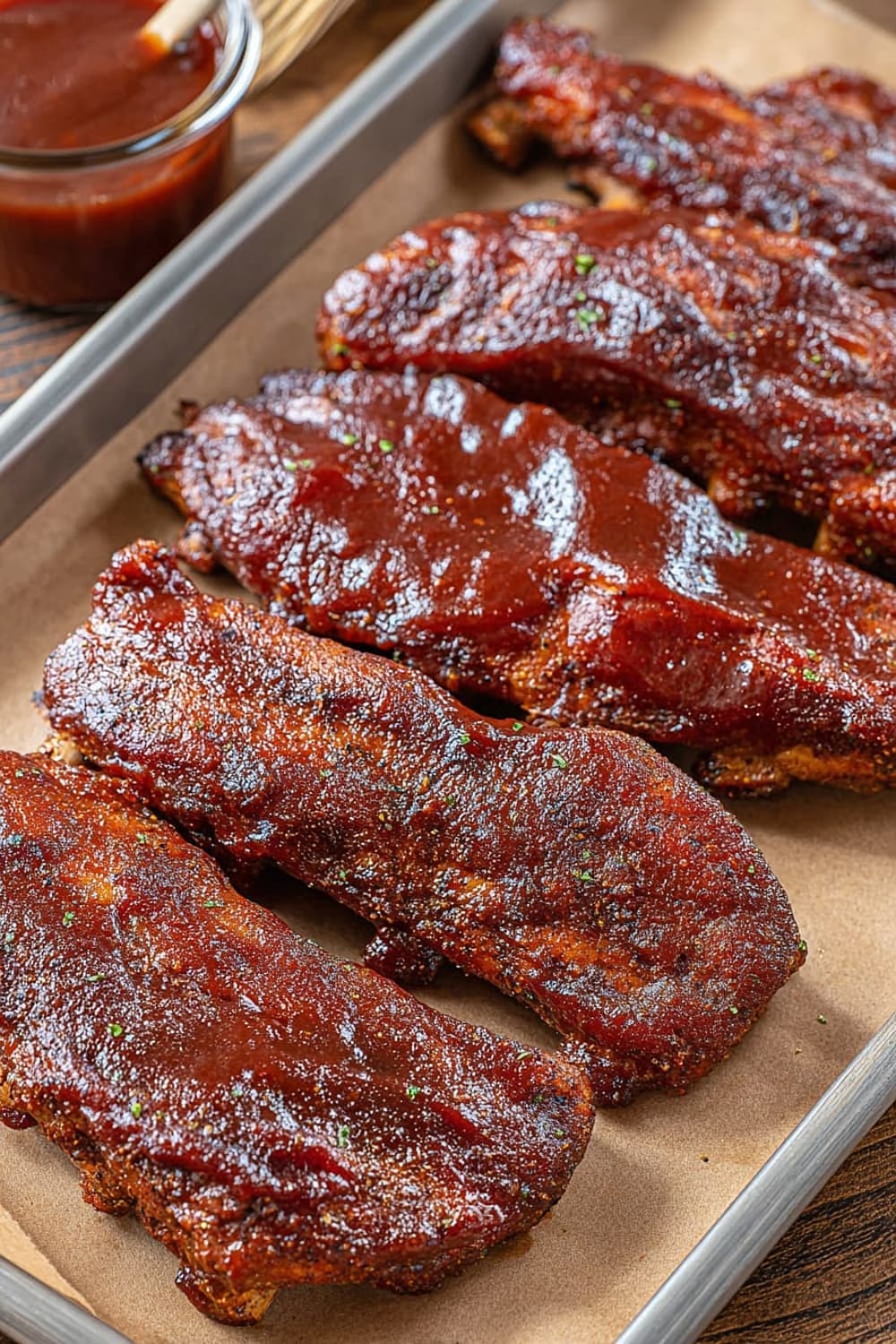
These ribs are basically the laid-back cousin of traditional ribs – they smoke faster, forgive your timing mistakes, and still deliver that fall-apart tender texture that makes people think you’ve been barbecuing for decades.
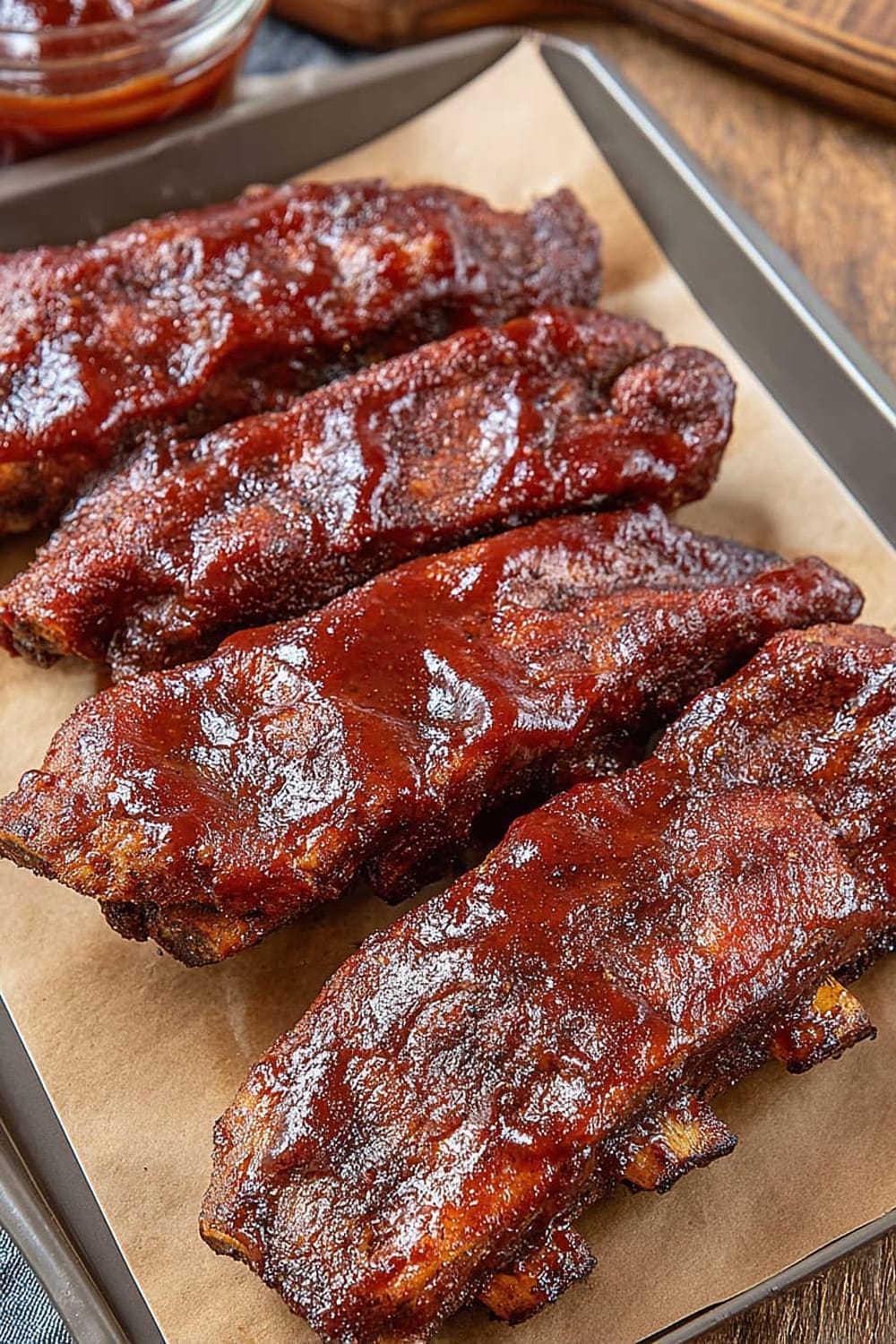
The magic happens when that sweet and smoky dry rub forms a gorgeous mahogany bark while the inside stays incredibly juicy, creating the perfect contrast of textures that’ll have your neighbors peeking over the fence.
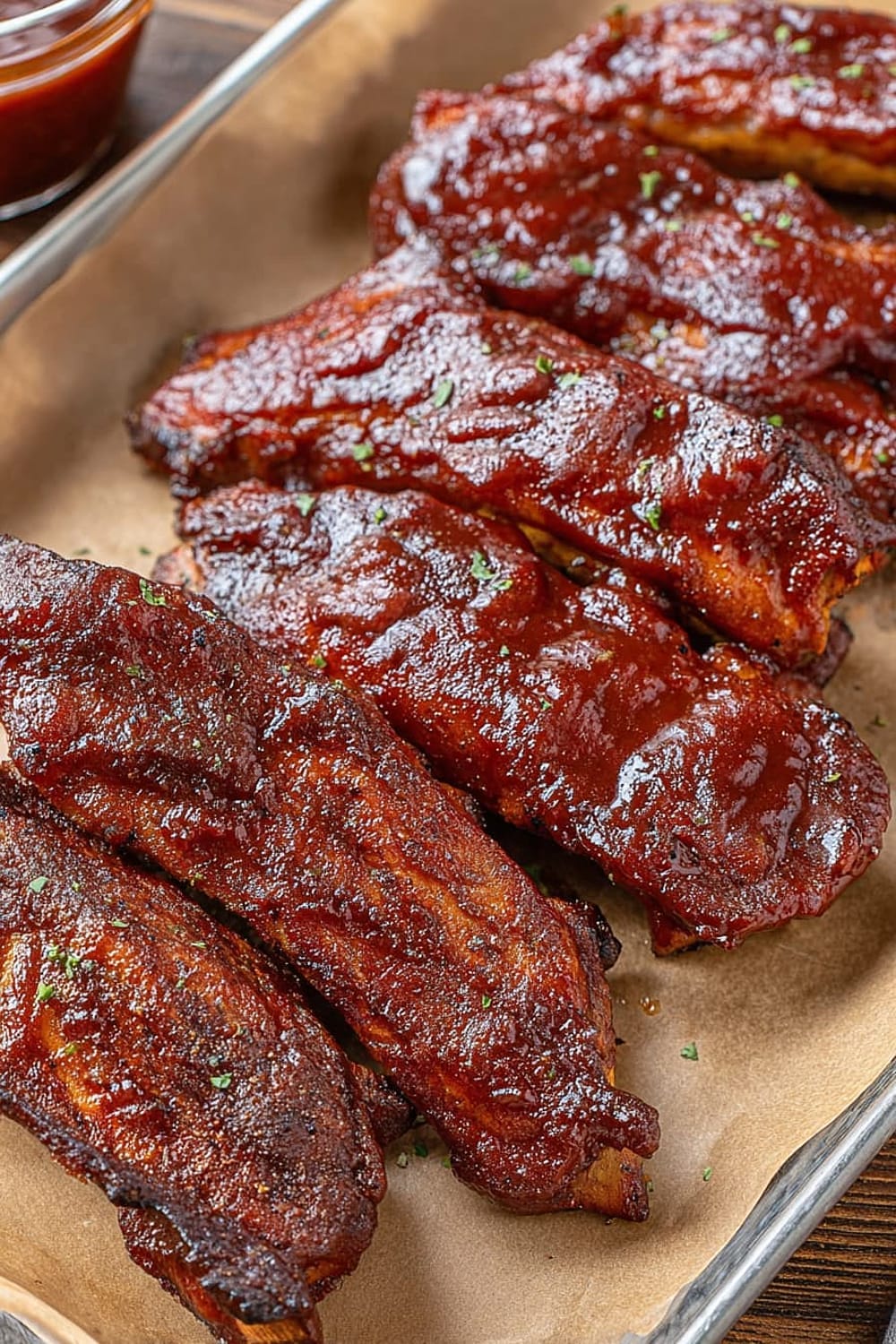
What makes country style ribs brilliant is they’re actually cut from the pork shoulder, so they’re more forgiving than traditional ribs and pack way more meat per bone.
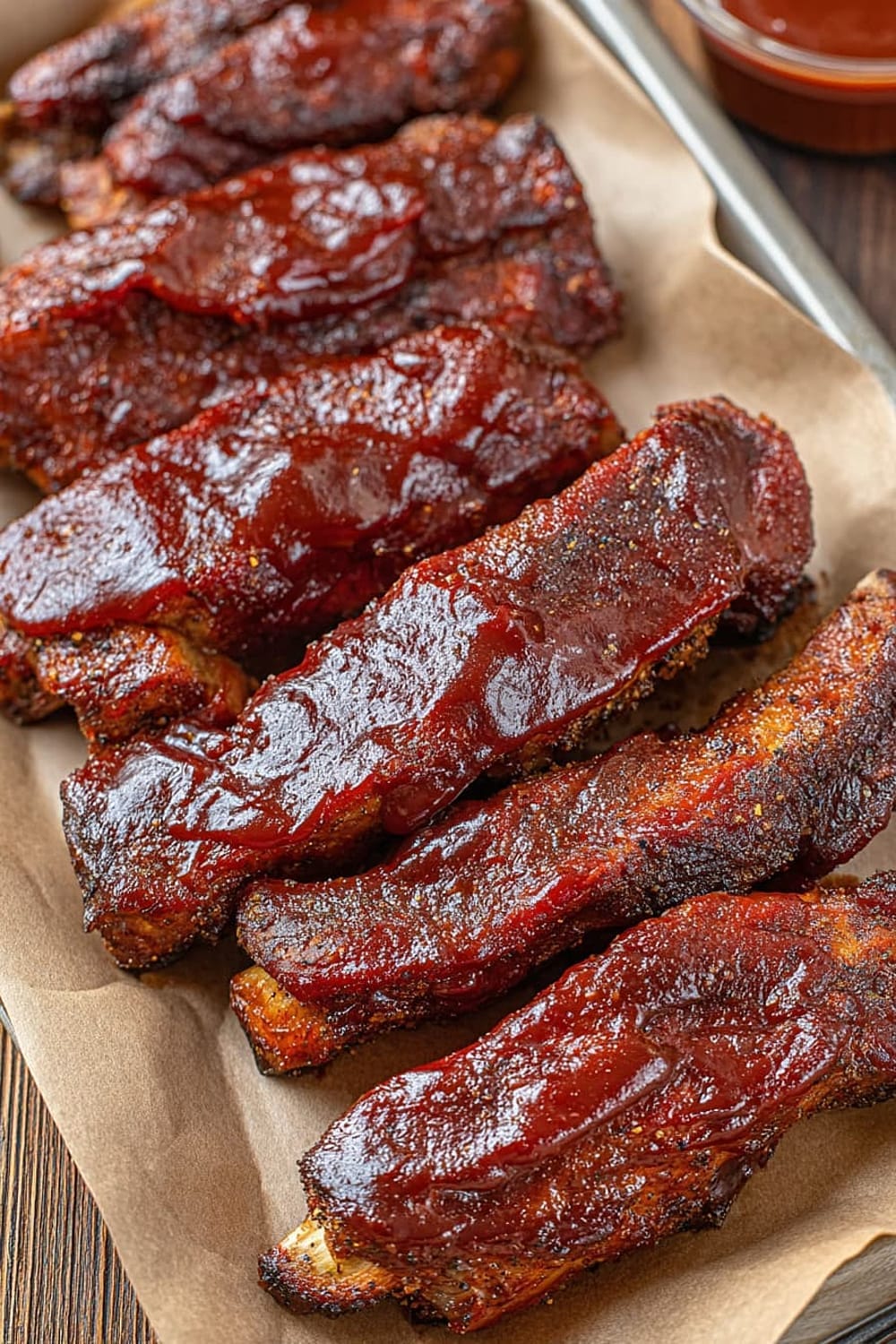
That apple cider vinegar spritz isn’t just for show – it keeps the edges from drying out while adding a subtle tang that cuts through the richness of the pork.
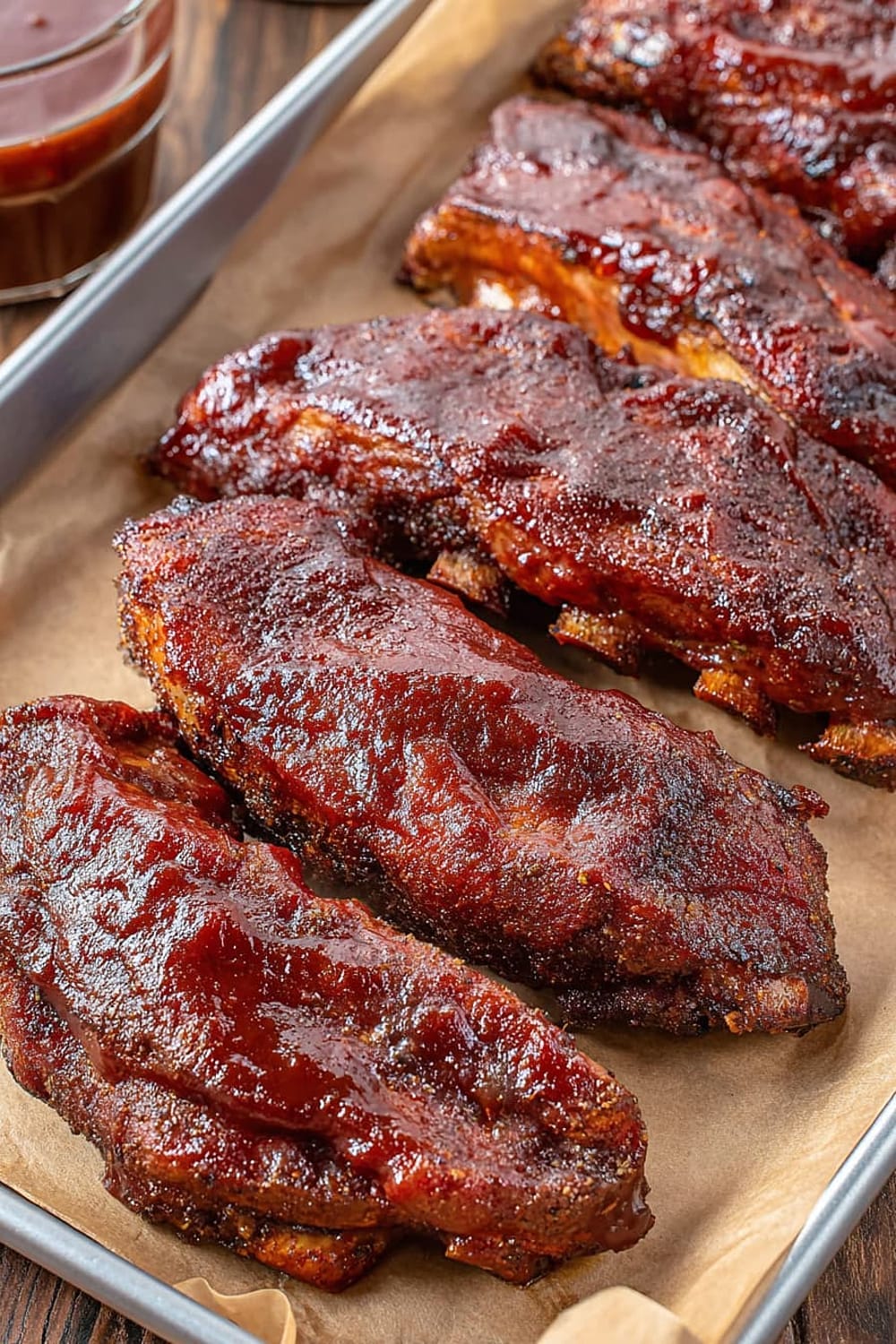
The best part is watching that BBQ sauce transform from a simple glaze into a sticky, caramelized coating that clings to every crevice during those final 30 minutes of smoking.
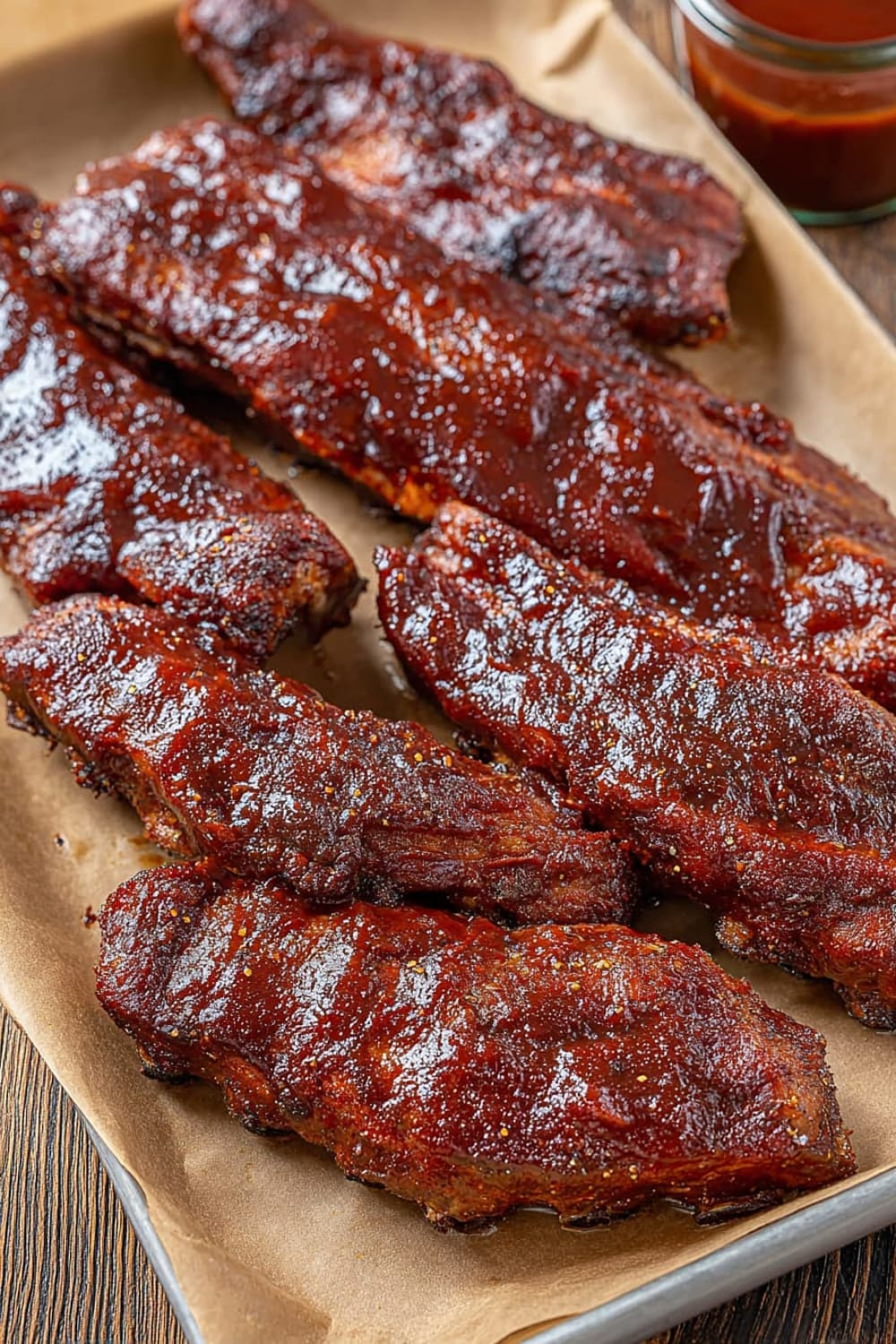
In just 3-4 hours, you’ll have restaurant-quality ribs that cost a fraction of what you’d pay at your favorite BBQ joint, and the satisfaction of nailing that perfect bark-to-meat ratio.
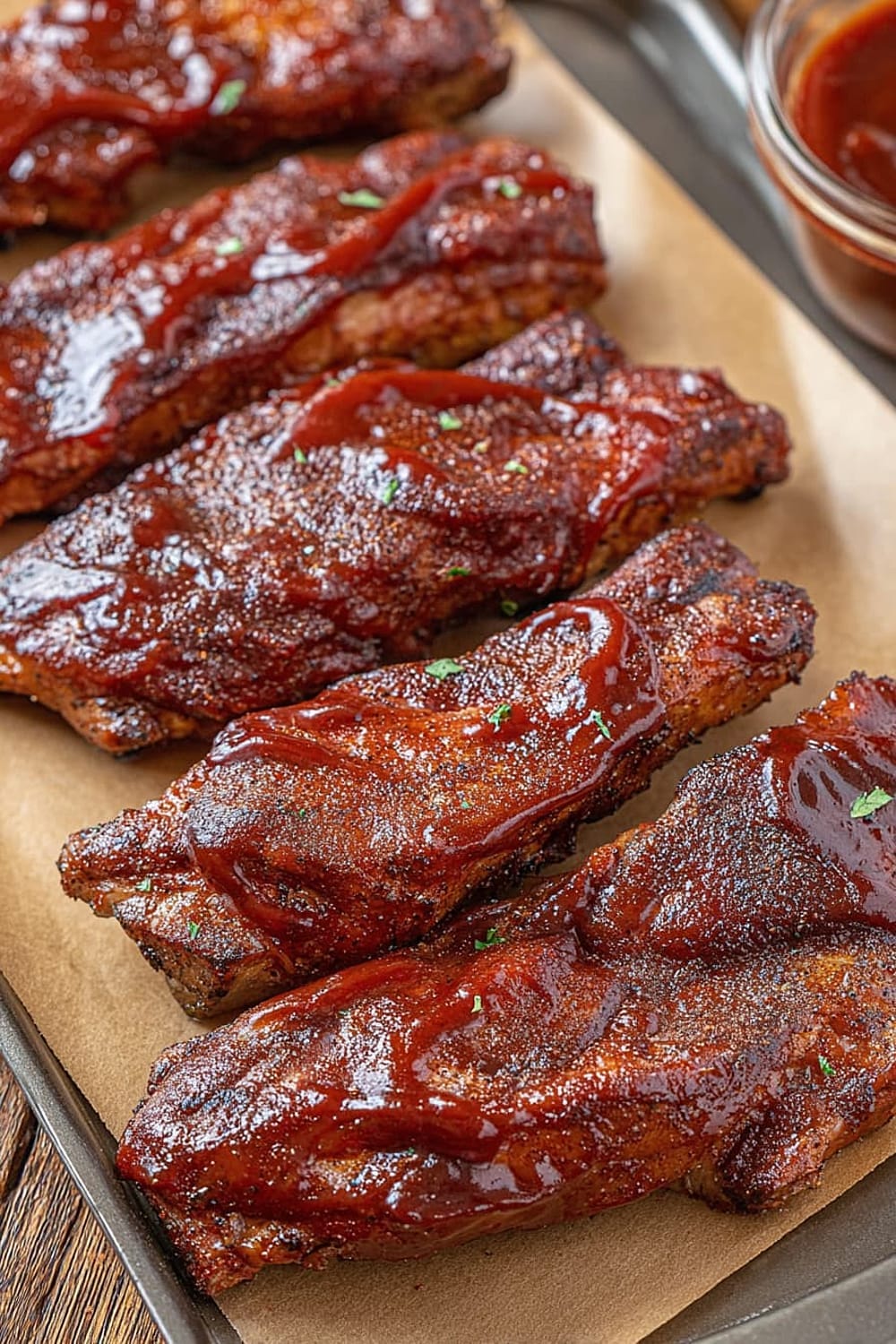
Ingredients
For the Ribs
- 4 pounds country style ribs, boneless or bone-in
- 1 /2 cup Signature Sweet & Smoky Rub (or your favorite BBQ rub), more as needed
For the Glaze
- 1 cup Smoky Sweet Heat Sauce (or preferred BBQ sauce), more as needed
For Spritzing
- Apple cider vinegar for spritzing throughout cooking
Instructions
Preparation
- 1 Prepare the country style ribs by trimming any excess fat that’s hanging off the edges. You want to remove loose pieces, but leave some fat for flavor and moisture. Season the meat generously on all sides with the sweet and smoky rub, making sure to coat every surface. Allow the pork to rest at room temperature for at least 30 minutes, or while the smoker is warming up to temperature. For even better flavor penetration, you can prepare the ribs hours beforehand and let them rest in the refrigerator.
Smoking Process
- 2 Preheat your smoker to 275°F (135°C) and add your preferred smoking wood. Once the smoker reaches the target temperature and produces clean smoke, place the seasoned pork on the grates, giving them 2-3 inches of space between each piece for proper air circulation.
- 3 Smoke the pork for approximately 3 hours at 275°F (135°C), maintaining consistent temperature throughout the cooking process. The initial smoking phase develops that crucial bark while slowly breaking down the connective tissues.
- 4 Spritz every 45 minutes using apple cider vinegar in a spray bottle. Focus on spritzing the edges and any areas that appear to be drying out. This helps maintain moisture and prevents the bark from becoming too hard while adding a subtle tangy flavor that complements the smoky rub.
- 5 Flip the pork after the first 90 minutes of cooking. This ensures both sides benefit equally from the spritzing process and allows the bottom side to develop an even, crispy bark. Handle gently to avoid disturbing the developing crust.
Finishing
- 6 Monitor internal temperature using an instant-read thermometer. Once the pork reaches 170-175°F (77-79°C) and the bark appears dark and crispy, you can begin glazing with the BBQ sauce. Brush or mop the sauce evenly over all surfaces.
- 7 Continue cooking for 20-30 minutes after applying the sauce, allowing it to caramelize and become sticky and tacky. The sauce should reduce and cling to the meat rather than running off.
- 8 Alternative finishing method: If you prefer to skip the sauce, remove the pork when it reaches 180-185°F (82-85°C) for a more traditional dry-rubbed finish. Rest the ribs for 10-15 minutes before slicing and serving to allow juices to redistribute.
Recommended Equipment and Kitchen Tools
Essential Tools (for best results)
- Pellet smoker or charcoal grill – maintains consistent 275°F temperature more easily than gas grills, though any smoker works
- Instant-read thermometer – crucial for monitoring internal temperature without guessing
- Spray bottle – dedicated for apple cider vinegar spritzing, prevents cross-contamination
- Long-handled tongs – keeps hands safely away from heat while flipping ribs
Helpful Upgrades
- Wireless meat thermometer – monitors temperature remotely so you don’t have to constantly check
- Silicone basting brush – applies BBQ sauce evenly without bristles falling off
- Heavy-duty aluminum foil – useful for wrapping if ribs need extra tenderness
- Digital kitchen scale – ensures accurate rub measurements for consistent results
Nice-to-Have Options
- Wood chips or chunks – apple, cherry, or hickory complement pork beautifully
- Disposable aluminum pans – catch drippings and make cleanup easier
- Heat-resistant gloves – provide better grip and protection when handling hot meat
Recipe Variations and Dietary Modifications
Rub Variations
- Coffee-based rub → Replace 2 tablespoons of original rub with finely ground coffee for deeper, earthier flavor
- Spicy version → Add 1-2 teaspoons cayenne pepper or chipotle powder to existing rub
- Sweet and tangy → Mix in 2 tablespoons brown sugar and 1 tablespoon garlic powder
- Memphis-style dry → Skip the sauce entirely and add extra paprika and black pepper to rub
Sauce Alternatives
- Carolina mustard sauce → Replace BBQ sauce with tangy mustard-based sauce for regional variation
- Asian-inspired glaze → Combine soy sauce, honey, and sriracha for fusion twist
- Apple butter glaze → Mix apple butter with apple cider vinegar for fall-inspired sweetness
- Bourbon glaze → Add 2 tablespoons bourbon to existing BBQ sauce for complexity
Cooking Method Adaptations
- Oven-finished → Start in smoker, finish in 300°F oven if weather doesn’t cooperate
- Slow cooker variation → Season and sear ribs, then slow cook on low for 6-8 hours
- Grilled version → Use indirect heat on gas grill with wood chips in foil packets
Nutritional Information and Health Benefits
Key Nutritional Highlights
Each serving provides approximately 350-400 calories with 25-30 grams of high-quality protein from the pork shoulder. Country style ribs are naturally rich in B-vitamins, particularly B12, niacin, and thiamine, which support energy metabolism and nervous system function. The smoking process preserves most nutrients while adding minimal calories compared to oil-based cooking methods.
Health Benefits of Main Ingredients
Pork shoulder provides complete protein with all essential amino acids needed for muscle maintenance and repair. It’s particularly rich in selenium, a powerful antioxidant that supports immune function. The apple cider vinegar used for spritzing contains acetic acid, which may help with blood sugar regulation and digestion. Smoking at lower temperatures like 275°F helps preserve more nutrients compared to high-heat cooking methods while creating beneficial flavor compounds.
Dietary Considerations
This recipe is naturally gluten-free and dairy-free when using compliant rubs and sauces. Each serving contains approximately 15-20 grams of fat, much of which is monounsaturated. The recipe fits well into ketogenic, paleo, and whole30 dietary patterns. Portion control is key – a 4-6 ounce serving provides substantial protein while keeping calories reasonable.
Smart Swaps and Ingredient Substitutions
Common Substitutions:
- Country style ribs → Pork shoulder steaks or thick-cut pork chops work similarly with same cooking method
- Sweet & smoky rub → 2 tablespoons brown sugar + 2 tablespoons paprika + 1 tablespoon each garlic powder, onion powder, salt
- BBQ sauce → Honey + soy sauce + apple cider vinegar mixed in 2:1:1 ratio
- Apple cider vinegar → White wine vinegar or apple juice for spritzing
Budget-Friendly Swaps:
- Premium rub → Homemade blend using paprika, brown sugar, salt, pepper, garlic powder
- Artisanal BBQ sauce → Store-brand sauce enhanced with honey and hot sauce
- Wood chips → Liquid smoke added to spray bottle with vinegar
Pantry Emergency Substitutions:
- No spray bottle → Baste with silicone brush every 45 minutes instead
- No thermometer → Cook until meat pulls apart easily with fork, about 4 hours total
- No smoker → Oven at 275°F with liquid smoke added to rub
Pro Tips for Substitutions:
- Store opened rubs in airtight containers to maintain potency for up to 6 months
- Homemade rubs can be made weeks ahead and actually improve in flavor over time
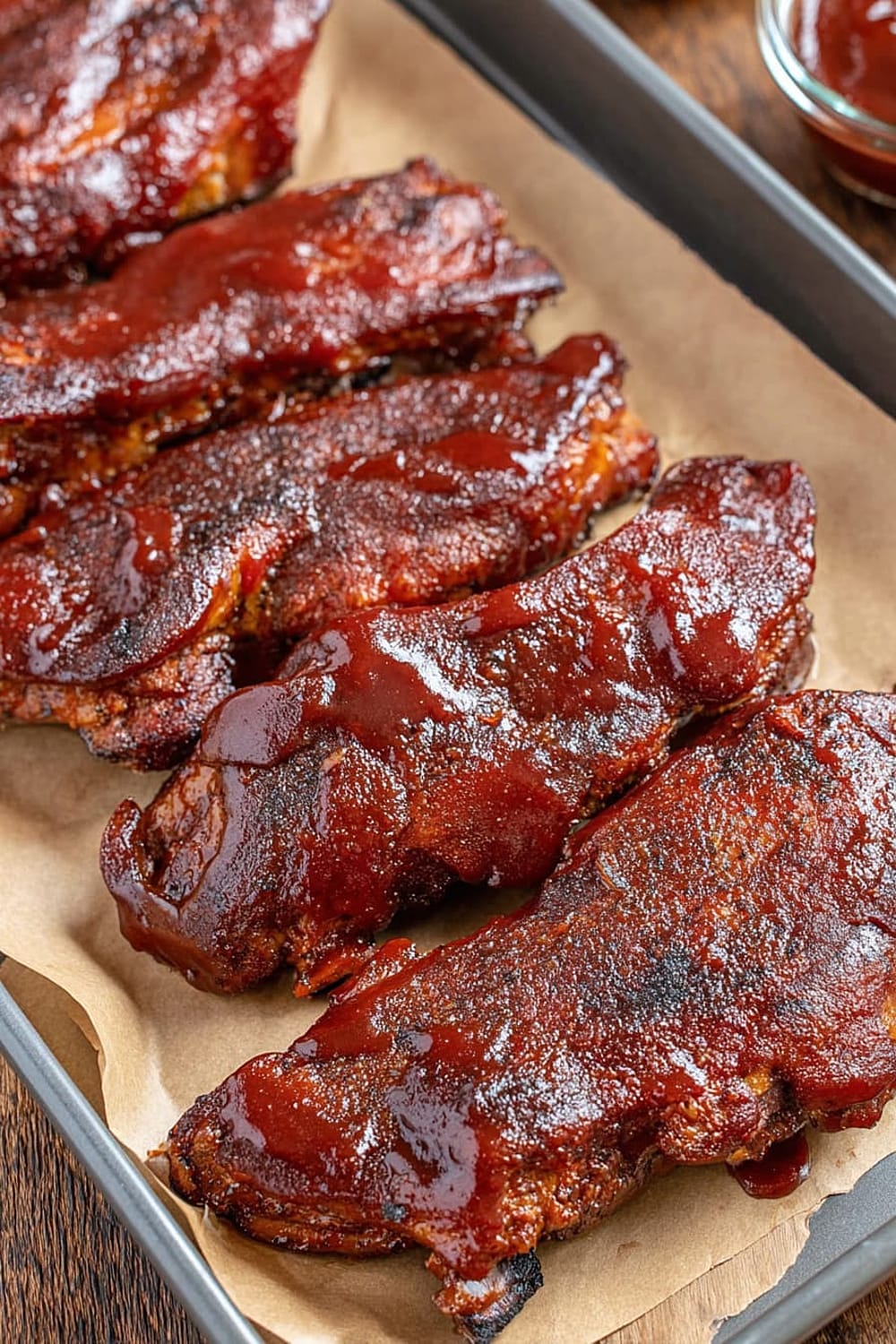
Make It Diabetes-Friendly
Sugar Reduction Strategies:
- Replace brown sugar in rub with sugar-free brown sugar substitute using 1:1 ratio
- Choose sugar-free BBQ sauce or make homemade version with stevia or monk fruit
- Reduce sauce portion to 2-3 tablespoons per serving instead of heavy coating
- Focus on dry rub flavors rather than sweet glazes for primary taste
Carb-Conscious Modifications:
- Skip sauce entirely for virtually zero carbs while maintaining full flavor from rub
- Use spice-heavy rubs with cumin, chili powder, and paprika instead of sugar-based blends
- Apple cider vinegar spritz adds less than 1 gram carbs per serving
- Pair with low-carb sides like grilled vegetables or cauliflower mash
Portion & Timing Tips:
- 4-ounce serving contains approximately 5-8 grams carbs with traditional sauce
- Sugar-free version reduces carbs to 2-3 grams per serving
- Eat with fiber-rich vegetables to slow glucose absorption
- Monitor blood sugar 2 hours after eating to gauge individual response
Total Carb Reduction: 60-70% reduction when using sugar-free alternatives
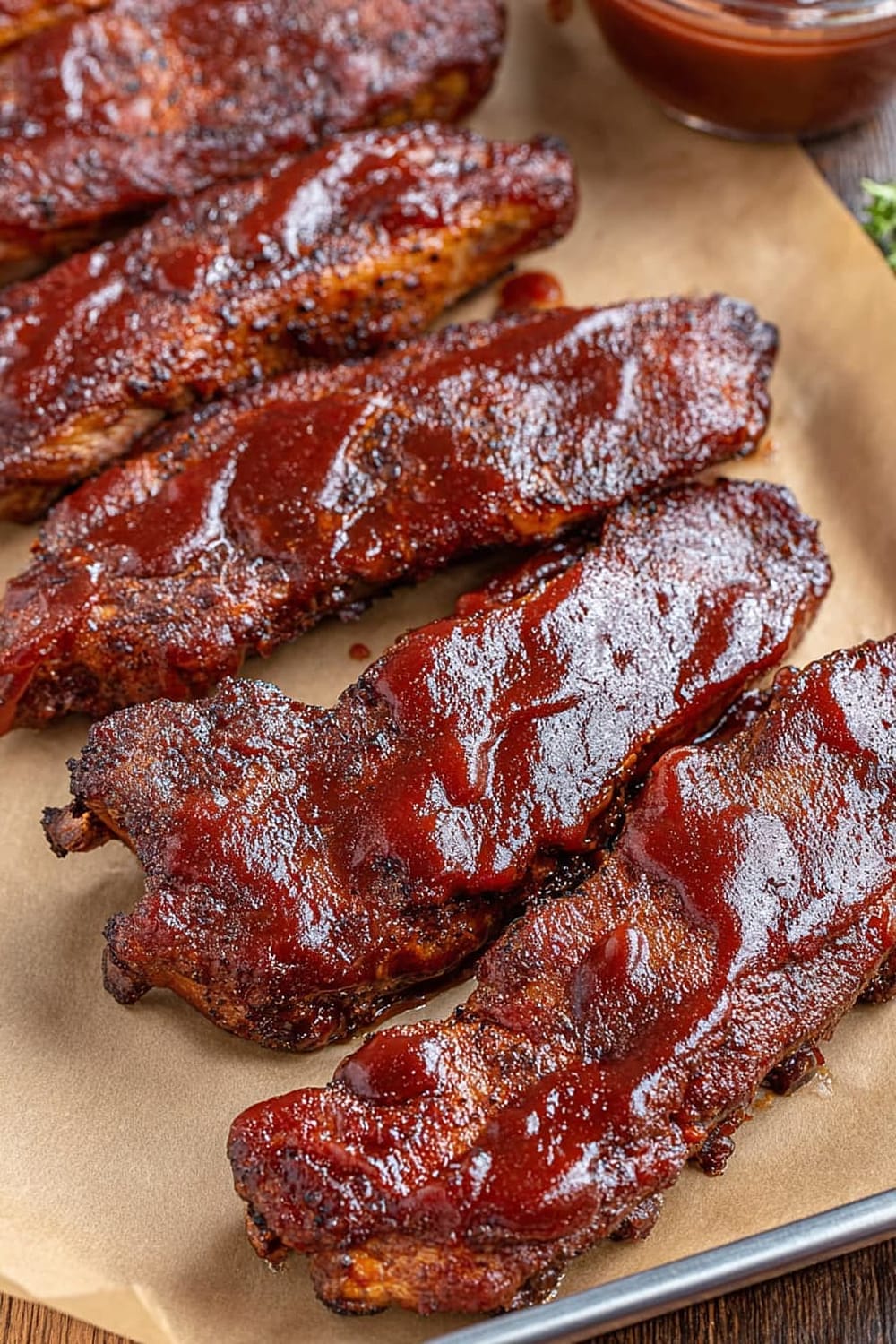
Perfect Pairing Suggestions
Beverage Pairings
Bold red wines like Zinfandel or Malbec complement the smoky richness beautifully, while craft IPAs cut through the fat with hoppy bitterness. For non-alcoholic options, sweet tea or ginger beer echo the Southern barbecue tradition. Cold brew coffee surprisingly pairs well with the coffee notes in many rubs.
Side Dish Recommendations
Creamy coleslaw provides cooling contrast to the smoky heat, while mac and cheese creates the ultimate comfort food combination. Grilled corn on the cob adds sweetness and char that complements the ribs’ flavor profile. Baked beans with bacon and molasses create a complete barbecue feast. Pickled vegetables cut through richness and cleanse the palate between bites.
Complete Meal Ideas
Start with jalapeño poppers or smoked wings as appetizers. Build your plate with ribs, cornbread with honey butter, and grilled asparagus for color contrast. Peach cobbler or bourbon bread pudding finish the meal with Southern flair.
Occasion Suggestions
Perfect for weekend gatherings, tailgate parties, or casual summer entertaining. These ribs work beautifully for Father’s Day, Fourth of July, or any time you want to impress without the fuss of traditional ribs. Game day serving works well since they’re easier to eat than full racks.
Pro Tips and Troubleshooting
Temperature Control Mastery
Maintain steady 275°F by adjusting vents gradually – small changes prevent temperature swings. Cold weather requires more fuel, so stock up on pellets or charcoal. Wind screens help maintain consistent heat in outdoor conditions.
Common Mistakes to Avoid
Over-spritzing creates soggy bark, so limit to light misting every 45 minutes. Opening the smoker too frequently drops temperature and extends cooking time. Applying sauce too early causes burning – wait until internal temperature reaches 170°F.
Storage and Reheating
Refrigerate leftovers within 2 hours and consume within 3-4 days. Reheat gently in 300°F oven wrapped in foil to prevent drying. Freeze portions for up to 3 months in vacuum-sealed bags.
Make-Ahead Strategies
Season ribs overnight for deeper flavor penetration. Pre-make rub in large batches and store in airtight containers. Partially cook ribs and finish on serving day for time management.
Scaling Tips
Double recipes easily but allow extra cooking time for larger batches. Single rack cooks faster, so check temperature early. Different sizes finish at different times, so monitor each piece individually.
These smoked country style ribs prove that exceptional barbecue doesn’t require years of experience or expensive equipment – just patience, the right technique, and quality ingredients working together to create something truly memorable.